Change is in the air, and it defines the 2025 Bentley Continental GT Speed. Now in its fourth generation, Crewe’s grand-tourer enters its plug-in hybrid era with more power, fully electric driving, and stellar looks inherited from the one-of-12 Bacalar. This GT is the first new Bentley powered by the 4.0-liter twin-turbocharged V8 and electric motor combo to serve the upcoming Flying Spur Speed and the Lamborghini Urus SE. As such, it doesn’t just close the W12 chapter that defined the marque for 21 years. It sets the tone for the one that follows.
In this case, what’s changed defines it as much as what hasn’t. This may be the new Continental GT, but it isn’t all new. It carries over the third-gen’s basic structure and some of its active suspension suite. However, this fourth-gen car expands the breadth of its versatility with two-valve active dampers, an electronic limited-slip differential, and extensively reworked software. The new GT promises improved performance, Comfort, and efficiency, but is the plug-in hybrid Continental more than just the by-product of tightening emissions regulations?

I stepped out of the hotel in Andermatt, Switzerland, to an idyllic scene. Towering, snow-capped mountain peaks surrounded the small village, the weather just warming up to the low 40s. A neat row of GTs and GTCs lined the parking lot, finished in bright shades of Magenta, Tourmaline Green, Bronze, and Candy Red. Unaware of the epic mountain passes ahead, I settled behind the wheel of a GTC Speed wearing Jetstream paint, immediately dropped its top, and set off with neck warmers engaged.
Assuming its 25.9-kilowatt-hour battery pack is sufficiently charged, the 2025 Bentley Continental GT Speed will first move on electric power and, according to the European WLTP cycle, cover up to 50 miles. This mode’s importance is slightly less so for US buyers, as it’s meant to grant this car access to ultra-low emission zones across the pond. However, it will allow the GT to travel up to 87 mph without waking its V8. Crucially, on this day, it created the perfect tool for crossing a quiet ski town in the early morning without making a sound.
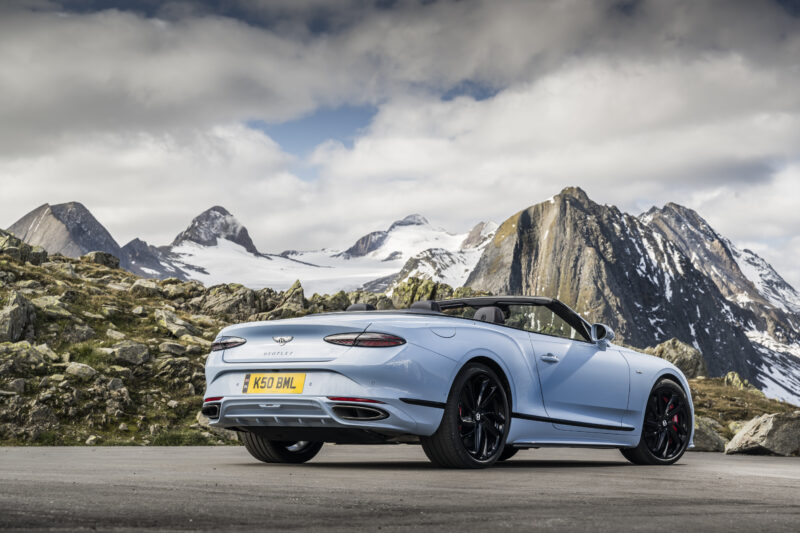
It’s evident that Bentley’s recent coachbuilt projects have influenced the fourth-gen GT. Like the Bacalar, it replaces the two headlight arrangement this model is famous for with a single lens sporting an elongated daytime running light. Like the Batur, its tail lights are now considerably wider, pushing right up to the edges of its bodywork and sporting clear lenses. Meanwhile, its trunk no longer needs active elements to generate the necessary downforce, thanks to a new lid that curves slightly upward. Coupled with sharper lines on its front and rear bumpers, the GT wears a more angular, sporty aesthetic.
As I began my charge up the first mountain pass, progressively leaning more on its accelerator, its V8 joined the conversation. Its presence was immediately felt with a delightfully burbly rolling cold start accented by off-throttle crackles. Switching out of the adaptive “B” mode and into Sport ensures it’s constantly engaged while simultaneously charging the battery pack in the rear. In this setting, the Speed produces a staggering 121 horsepower and 74 pound-feet of torque more than the discontinued W12. In total, it generates 771 hp and 738 lb-ft.

Combined with electric and internal combustion power, the GTC Speed sprints through Switzerland’s winding roads and its extensive tunnel system with surprising speed. It responds instantaneously to throttle inputs, with both propulsion systems working seamlessly to eliminate delays. Together, they create just one violent and relentless burst of acceleration. There’s never a drop-off point, even as you near the redline. Click up to the next gear, and the wave of power keeps going.
Approach a bend, and its standard carbon-ceramic brakes will effortlessly scrub off the pace while its dual-clutch automatic instantly works its way down its eight speeds. Turn in, and the Continental’s front end follows now that a hefty W12 doesn’t urge it to continue pushing forward. With its battery pack stuffed beneath its trunk area, the Bentley Continental GT Speed and the GTC offer a nearly perfect weight distribution of 49:51. Its active anti-roll system limits unwanted body movements, while its air shocks firm up but never spoil its ride.
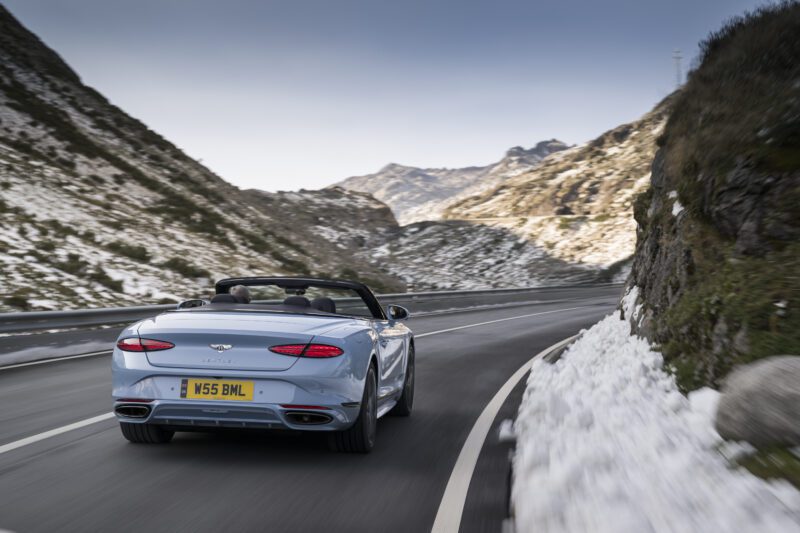
Yet, as you slow things down and move into Comfort mode, the fourth-gen Continental is more gently sprung than its predecessor. Credit for this versatility goes to its two-valve dampers and two-chamber air springs, allowing it to be firmer in Sport and softer in Comfort, expanding the areas where the GT and the GTC excel. You won’t pay a penalty for the Speed’s added athleticism, further pushing the boundaries of a grand tourer’s adaptability.
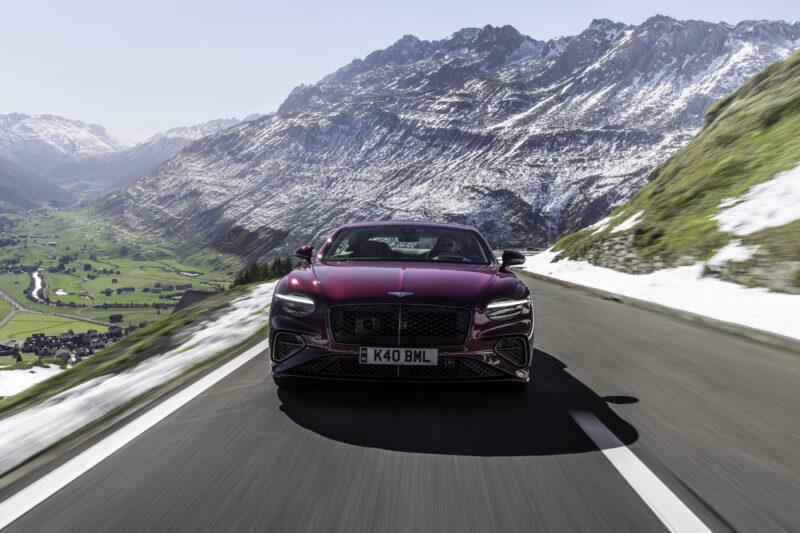
About halfway through our drive route, I hopped out of the GTC Speed and into a Magenta-finished GT. Aside from a fixed roof, the most significant difference between the pair is weight. The coupe tips the scales at 5,421 pounds or about 400 lb more than its W12-powered predecessor, while the GTC pushes that figure to 5,811 lb. These are both substantial machines and despite their suite of active suspension systems masking their heft, you’ll feel it when stepping out of one and in the other.
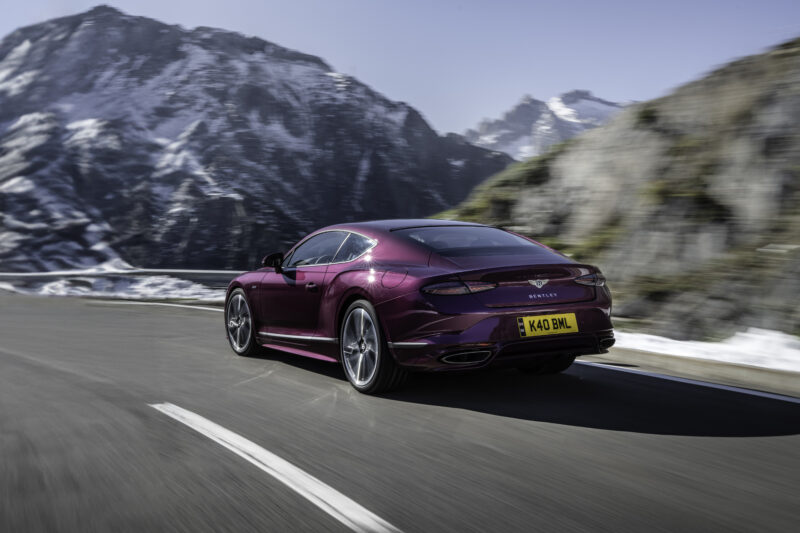
Of the two, the Bentley Continental GT Speed will be the one for those looking for a sportscar-like experience. Its relative lightness enables its 0-60 time of 3.1 seconds, but more importantly, its agility in the bends. If the GTC was eager to change direction, the GT is quicker still, keen to confidently tackle a mountain road on command. The only downside of selecting the fixed-roof car is how suddenly distant its exhaust note feels, no longer crackling behind your ears.
The upside is the GT’s nearly silent cabin, which, aside from a new digital instrument cluster, essentially carries over from its third generation. As such, it retains the option of a rotating display and a center console adorned with physical buttons. However, its options list grows, adding a darkened trim option offered along with the standard chrome finishes this grand tourer is known for.
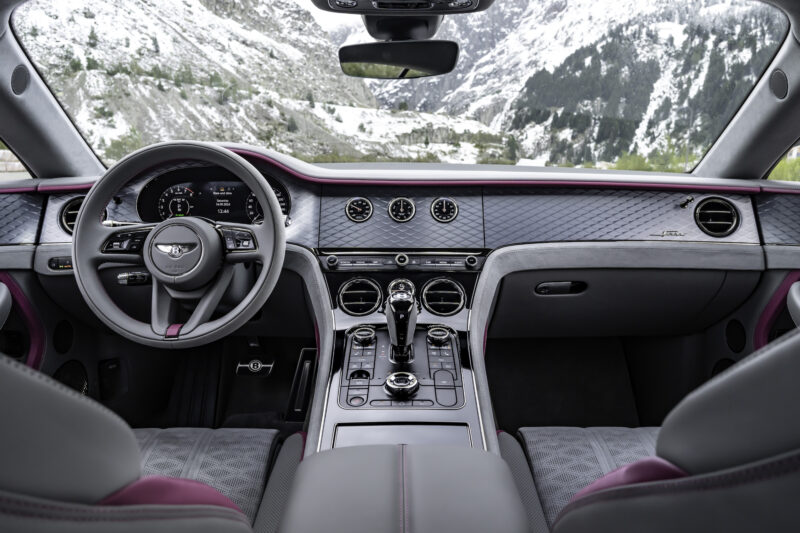
For now, at least, this plug-in hybrid V8 remains the only powertrain option offered for the 2025 Bentley Continental GT Speed and GTC Speed. The pair start at $302,100 and $332,200, respectively.
As I turned back towards Andermatt, impressed with how capable and quick the Bentley Continental GT Speed has become, I couldn’t help but notice that I wasn’t missing the now departed W12. Although I’ve covered, at this point, thousands of miles in cars powered by it, this plug-in hybrid V8 represents a step forward in seemingly every aspect. It generates more power, is more responsive, and, thanks to a vocal exhaust system, sounds better, too.

Adding a battery pack gives a usable all-electric range for commuting. It improves its weight distribution and, thus, its handling. However, the Speed’s updated active suspension shines, making it more athletic on a winding road and softer sprung for longer drives. There is no question that the Continental GT Speed has changed, but a drive through the mountains confirms it has for the better. Stricter emissions regulations may have forced Bentley to change, ending the production of its iconic 6.0-liter W12, but the Continental enters its plug-in hybrid era from a position of strength.
#Bentley #Continental #Speed #Enters #PlugIn #Hybrid #Era